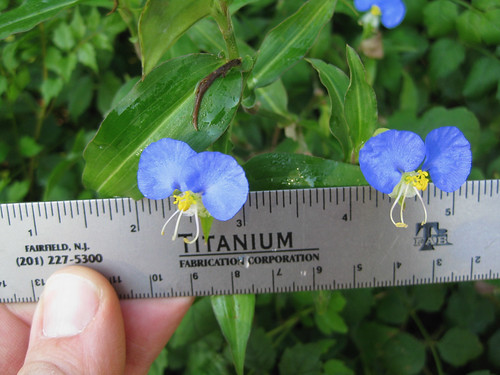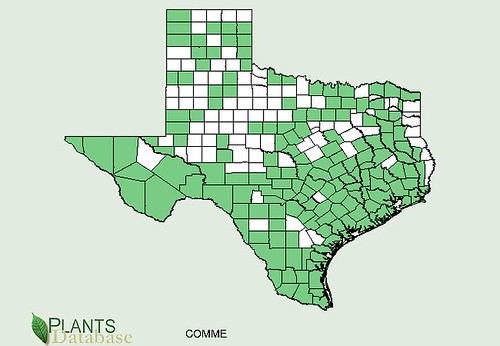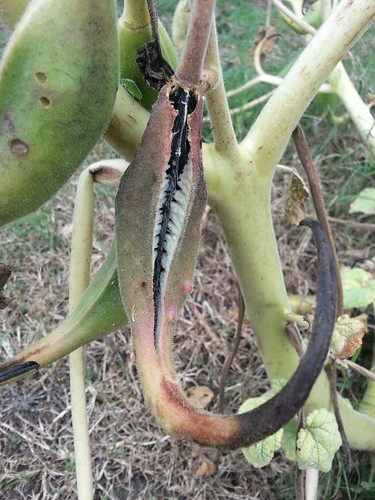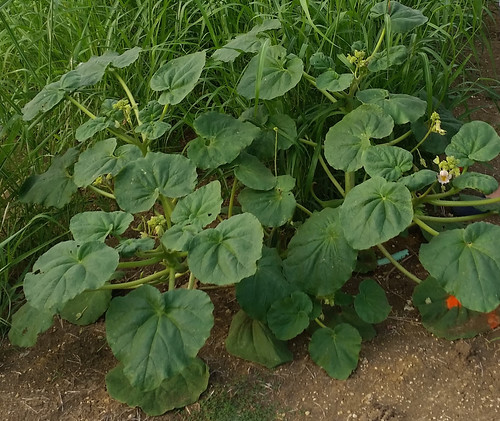Abundance: uncommon
What: seeds, flower
How: seeds ground into flour, sprouted; flower raw or dried for tea
Where: sunny fields and ditches with moist soil, landscaping
When: spring, early summer
Nutritional Value: calories
Field of crimson clover

Young flower just beginning to turn crimson.
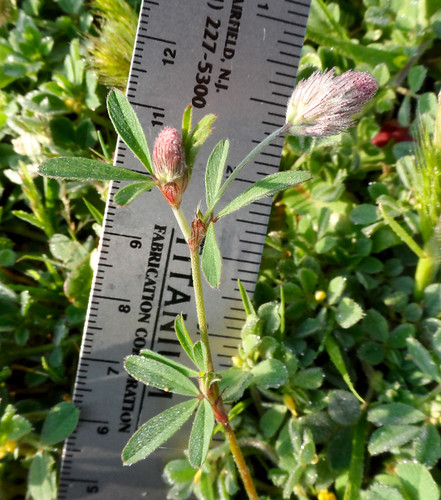
Mature flower head. They are much more elongated than white and red clovers

Close-up of leaf. Note the fine hairs along the leaflets' edges.

Texas distribution, attributed to U. S. Department of Agriculture. The marked counties are guidelines only. Plants may appear in other counties, especially if used in landscaping.

North American distribution, attributed to U. S. Department of Agriculture.

The sunny fields of east Texas turn fiery red in the springtime with thousands of Crimson Clover flowerheads. This durable, prolific wildflower can often be found growing profusely in road medians thanks to Lady Bird Johnson's Texas beautification program. Beware sticking your nose too close to inhale its sweet aroma as both butterflies and bees find its nectar quite delicious!
Though lacking the medicinal properties of Red Clover, Crimson Clover's flowerhead makes a pleasant tea and can be used either fresh or after drying. I've never smoked it but based on my experience with other clovers, it's likely it'll be just as good.
The seeds have a long history of being collected and ground into flour. The individual seeds are small but it's relatively easy to harvest many of them to add to other plant seeds you've gathered. These seeds can also be sprouted into highly nutritious microgreens using standard sprouting techniques.
Being a nitrogen fixer, Crimson Clover makes an excellent fallow crop for revitalizing depleted soils. They prefer near-neutral pH soil with good drainage for optimal growth. A thick mat of this will often choke out other weeds which is either good or bad depending on how hungry you are. :-)
Buy my book! Outdoor Adventure Guides Foraging covers 70 of North America's tastiest and easy to find wild edibles shown with the same big pictures as here on the Foraging Texas website.

















